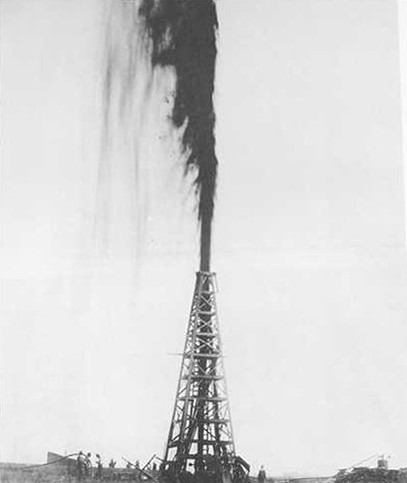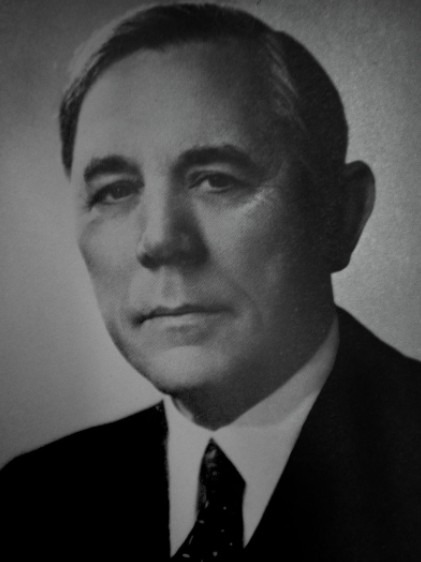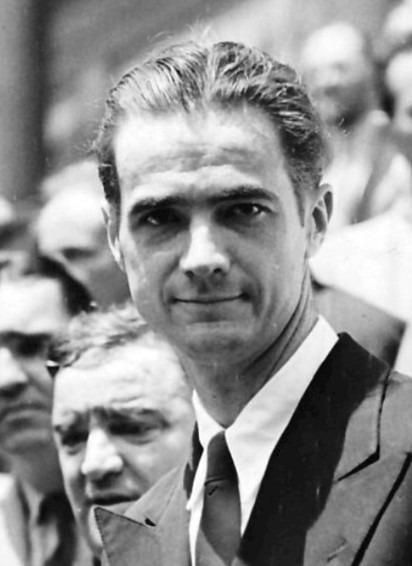Texas is known for producing and supplying a large share of oil to the entire United States. Although it has become an oil industry over time but not everyone is aware of how it all came about. The discovery of oil in Texas drastically changed the lives of the Texans and continues to do so. Today, people living in Texas along with the industries solely rely on its oil and several important characters have also played a crucial role in the past to ensure that Texas becomes as prosperous as we see today.
The Beginning of the Oil Boom
It is a well-known fact that Texas underwent what is called the Texas oil boom or sometimes the gusher age. It was a time when Texas experienced some dramatic and impressive changes along with economic growth during the early 20th century. It all started with a discovery of a large petroleum reserve in Beaumont, Texas. Not only was the discovery unexpected and unprecedented in size but paved a way for Texas into the rapid regional development and industrialization.
Such examples are very rarely seen in the history of the United States. It wouldn’t take long for Texas to become one of the largest oil producers for the United States in addition to Oklahoma and California. Soon, the nation overtook the Russian empire interms of the biggest producer of petroleum. By 1940, Texas had dominated the entire oil production taking place in the United States.
Although the major petroleum strikes took place in Southeast Texas that led to the exploration and speculation of further petroleum sources but soon enough more reserves were discovered across Texas and wells were constructed in North Texas, East Texas, and the Permian Basin in West Texas. During the 19th century, Texas was working with limited reserves discovered but the strike at Spindletop in 1901 near Beaumont not only received international attention but triggered exploration and speculation that continued through the 1920s.
Historians credit the strikes of Spindletop and the Joiner in East Texas for changing Texas’s course of history. Apart from the discovery of the oil reserves, not many people had imagined that Texas would go through such a spectacular transformation effect and phase. At nearly the century’s end, the state was rural with no large cities.
By the end of World War II, the state became heavily industrialized and the population of Texas grew to the extent where the state ranked amongst the top 20 nationally. Houston proved to be the biggest beneficiary of the boom and the Houston area became the largest concentration of refineries and petrochemical plants in the world. Following the era, Houston went from being a small commercial center in 1900 to one of the largest cities in the United States.
Time Frame
Texas oil discovery and boom did not take place overnight. Instead, there were several events during the 19th century that sparked the beginning of oil-related growth. The earliest discovery was the Corsicana oil field in 1984. Nevertheless, many historians believe that the Spindletop strike in 1901 was and still is the most productive petroleum well ever found.
Following the years, the world would observe Texas go through a phase of rapid growth and development. By the 1940s, the Texas Railroad Commission was given the responsibility to regulate the production and supply of oil in Texas and worked to eliminate most of the wild price swings that commonly occurred at the time.
As a result, many boomtowns such as Wortham saw their booms begin in the 1920s and soon end during the late 1920s and early 30s due to the collapse of local economies, which was a direct result of their dependence on relatively limited petroleum reservoirs. As the production peaked in the smaller fields and the Great Depression lowered the demand, it caused the investors to flee.
By the end of World War II, development and growth in major manufacturing centers such as Beaumont, Houston, and Dallas continued at different levels. However, as the war ended, the economies of the major urban areas of the state had matured.
Early History of Petroleum
It all began with Abraham Gesner who in the 1850s invented the process of distilling kerosene from petroleum. As a result, the demand for petroleum as a fuel for lightning grew. This gave rise to petroleum exploration and soon the Russian Empire dominated the world particularly the Branobel company located in Azerbaijan, taking the lead in production by the end of the 19th century. Then, in 1859, Edwin Drake from Pennsylvania introduced the process of drilling oil from deep within the earth.
Drake’s invention is given credit for giving birth to the oil industry in the U.S. The first oil refiner opened during the Pennsylvanian oil rush in 1861 in Western Pennsylvania. John D. Rockefeller founded Standard Oil in Ohio and soon became a multi-state trust. Another important point to remember is that Texas always knew about the oil that rested underneath the surface of Texas.
However, at the time, it was considered more of a problem than a benefit since it hindered the digging of water wells. Rancher William Thomas Waggoner struck oil in Fort Worth in 1902 while drilling for water. He later went onto becoming an influential oil businessman.
Growth of “Big Oil”
Spindletop
If you were wondering that the Spindletop strike took place naturally, you were wrong. Infact several attempts were made to extract oil from the salt domes near Beaumont but to no avail. Then, a small enterprise by the name of Gladys City Oil, Gas and Manufacturing Company was joined by Mechanical Engineer Anthony F. Lucas who was an expert in salt domes. Lucas along with his colleagues struggled for two years before they hit a strike in 1901.
The newly discovered well-produced nearly 100,000 barrels of oil per day, which nothing less than spectacular at the time and had a significant impact on the Texas economy. By 1902, the annual production of Spindletop exceeded 17 million barrels. At the time, the total production of the state was only 836,000 barrels in 1900. As a result of the surplus supply, the oil prices came down to as low as 3 cents per barrel, making it less expensive than water. Soon, Beaumont became a boomtown with investors looking to invest in drilling areas.
The investment in Texas speculation in 1901 alone amassed nearly $235 million US. The oil speculation in Pennsylvania and other areas of the United States overtook Texas’s speculation.
Discoveries Spread
In 1930, the East Texas Oil Field was discovered by Columbus Marion Joiner who was a self-educated prospector. At the time, East Texas had not been significantly explored for oil before then and this lead to several “wildcatters” looking and being able to purchase large tracts of land to exploit the oil field. The discovery of this new oil field helped revive Dallas’s economy during the Great Depression.
However, a new supply decreased the interest in West Texas sharply and lead to another significant drop in oil prices. Soon, the exploration of oil went out of hands and destabilized the state’s oil industry, which was already trying to control production while stabilizing the prices. The overproduction in East Texas was so huge that it forced the government at the time to shut down many wells.
At first, the attempts were unsuccessful but the closure of most wells led to the smuggling of oil in the later 1930s. This was done to protect both independent operators and major producers.
Iconic Figures of the Era
The Big Four
The boom of the 1920s and 30s had four businessmen that played an important role including H. Roy Cullen, H. L. Hunt, Sid W. Richardson, and Clint Murchison. Cullen was a real-estate businessman in addition to a self-educated cotton dealer as well. He had moved to Houston in 1918 and began oil prospecting.
Cullen’s success with oil prospecting led him to create the South Texas Petroleum Company along with Quintana Oil Company. Cullen and his wife established the Cullen Foundation which was at the time one of the biggest charitable organizations in the state. It donated heavily to the University of Texas and the Texas Medical Center.
Hunt, on the other hand, experienced most of his successes in the oilfields of Arkansas but lost most of his fortune during the Great Depression due to overproduction. His fields got oil depleted and the speculation of land drained his oil resources. Then, Hunt joined the Columbus Joiner’s venture, which had opened in the East Texas Oil Field. As a result, Hunt bought most of Joiner’s interest in Placid oil, eastern Texas, and his company.
At the same time, he owned hundreds of wells as well. Soon he became well-established in Dallas and was termed as the richest man in the nation by 1948. Following his death, a scandal broke out involving Hunt in a hidden bigamous relationship with his second wife living in New York.
Richardson was a cattle trader who joined the oil expedition by running an independent oil production business in Fort Worth in 1919. He soon expanded his business and became the owner of several cattle ranches, radio and television networks, and owned the Texas City Refining Company along with other businesses. Richardson was known as a very private individual who was also sometimes called the “bachelor billionaire”.
Lastly, Murchison initiated his career by working at his father’s bank and soon became an oil lease trader. He joined hands with Richardson and expanded the reach of oil in northern Texas following San Antonio and finally the Dallas area. He created the Southern Union Gas Company and became an East Texas field developer. Murchison then worked his way into international oil and gas operations in Canada and Australia.
Apart from these four icons, there were several others as well that became well-known later on. For instance, Howard Hughes who was a Houston business magnate invented a key drill-bit technology during the early days of the boom period. He had huge investments in the aviation and film industries as well.
Glenn McCarthy was the man behind the pioneered wells around the Houston area. In 1932, he struck oil at Anahuac near the Galveston Bay. Over the next decade, he would make several other strikes and quickly become one of the richest men in Texas. His love for bourbon led him to create his own label the WildCatter bourbon.
Final Word
Although Texas experienced rapid growth and development in just a few years, the excess production and discovery of oil led to the contamination of the environment as well. At the time, the conservational efforts saw little success since few regulations were controlling the industries. However, in the late 20th century, conservation efforts led to improving and even reversing some of the earlier damages to the ecosystem. As a result, Texas today continues to thrive but with strict regulations and laws overlooking it.





